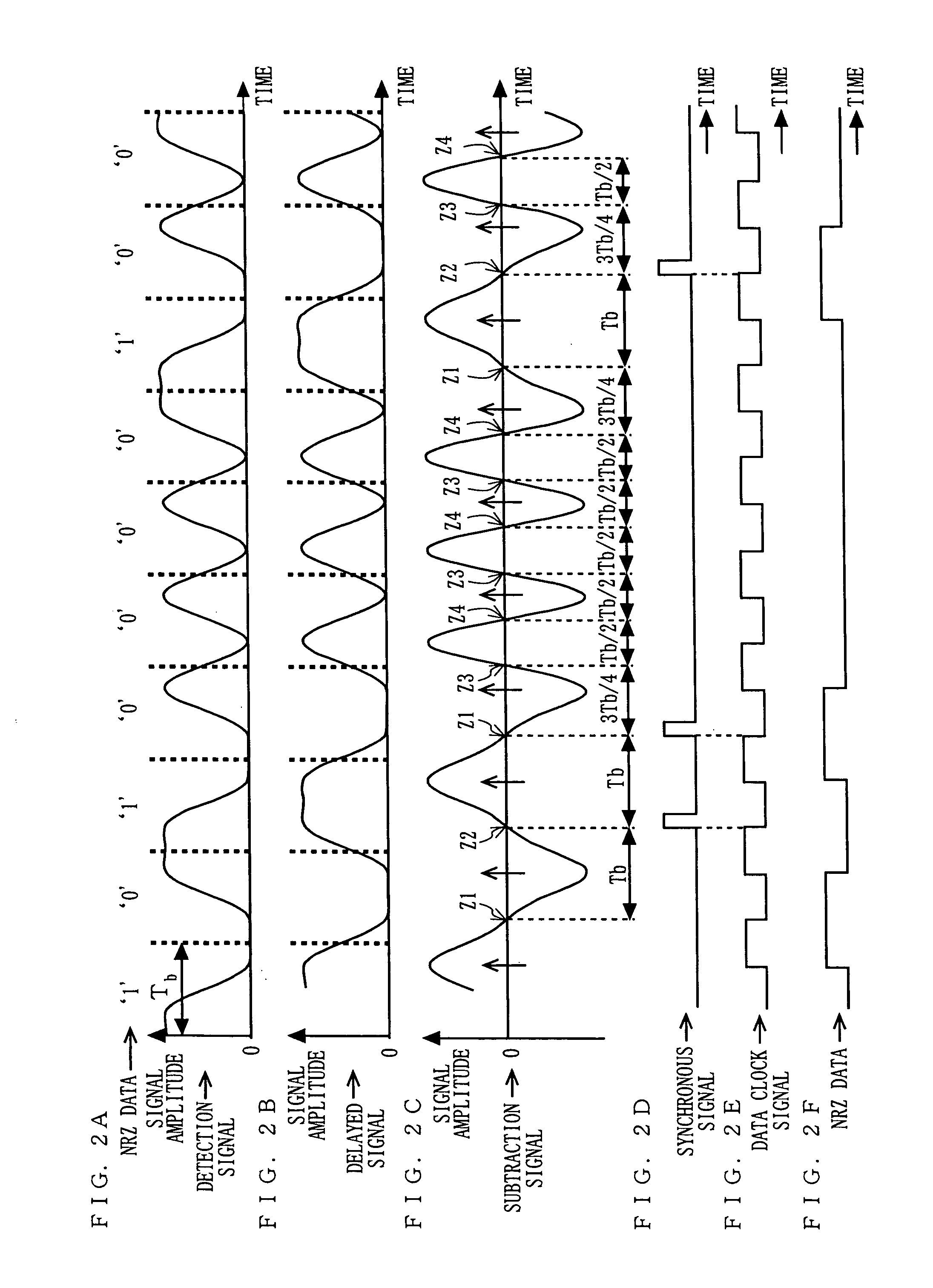Ask demodulation device and wireless device using the same
a demodulation device and wireless technology, applied in the field of ask demodulation device and wireless device using the same, can solve the problems of slow response of mean value, limited change of threshold value quickly, and bit errors often occurring in manchester code decoding, etc., to achieve increase snr, and excellent bit error rate characteristics
- Summary
- Abstract
- Description
- Claims
- Application Information
AI Technical Summary
Benefits of technology
Problems solved by technology
Method used
Image
Examples
first embodiment
[0083]FIG. 1 is a block diagram illustrating a structure of an ASK demodulation device 1 according to a first embodiment of the present invention. In FIG. 1, the ASK demodulation device 1 includes a data extraction section 10, a clock extraction section 13, a clock recovery section 14, and a determination section 15. The data extraction section 10 includes a delay section 11 and a subtraction section 12.
[0084] A detection section (not shown) detects a modulated signal which is ASK-modulated with a Manchester-encoded data sequence (Manchester data) by using a method such as synchronous detection or asynchronous detection, and inputs the detected signal to the data extraction section 10.
[0085] The data extraction section 10 outputs a signal including information (hereinafter referred to as an NRZ data component) about pre-Manchester-encoded NRZ data.
[0086] The clock extraction section 13 extracts, from the output signal of the data extraction section 10, a component (hereinafter re...
second embodiment
[0123]FIG. 14 is a block diagram showing a structure of an ASK demodulation device 2 according to a second embodiment of the present invention. In FIG. 14, the ASK demodulation device 2 includes the data extraction section 10, an integration filter 30, the clock extraction section 13, the clock recovery section 14, and the determination section 15. In FIG. 14, any component elements function similarly to their counterparts in the ASK demodulation device 1 as shown in FIG. 1 according to the first embodiment will be denoted by the same reference numerals as those used therein, and the description thereof is omitted.
[0124] A detected signal obtained by detecting a modulated signal which is ASK-modulated with a Manchester-encoded data sequence by using a method such as synchronous detection or asynchronous detection is inputted to the ASK demodulation device 2. The detected signal inputted to the ASK demodulation device 2 is inputted to the data extraction section 10. The data extract...
third embodiment
[0157] The ASK demodulation devices 1 and 2 according to the first and second embodiments, respectively, obtain NRZ data whose bit error rate is low by adjusting a data clock signal utilizing the fact that the zero-crossing time interval of the output signal of the data extraction section 10 is Tb when an NRZ data pattern “101” or “010” is received. In a third embodiment, a signal is transmitted and received using a frame data including at least one NRZ data pattern “101” or “010”.
[0158]FIG. 19 is a block diagram showing a structure of a wireless system and a wireless device 3 according to a third embodiment of the present invention. In the wireless system as shown in FIG. 19, a modulated signal is transmitted and received between the wireless devices 3 and 4, whereby wireless communication is performed. Note that only two wireless devices are shown in FIG. 19, but three or more wireless devices may be included.
[0159] In FIG. 19, the internal structures of the wireless devices 3 a...
PUM
 Login to View More
Login to View More Abstract
Description
Claims
Application Information
 Login to View More
Login to View More - R&D
- Intellectual Property
- Life Sciences
- Materials
- Tech Scout
- Unparalleled Data Quality
- Higher Quality Content
- 60% Fewer Hallucinations
Browse by: Latest US Patents, China's latest patents, Technical Efficacy Thesaurus, Application Domain, Technology Topic, Popular Technical Reports.
© 2025 PatSnap. All rights reserved.Legal|Privacy policy|Modern Slavery Act Transparency Statement|Sitemap|About US| Contact US: help@patsnap.com



